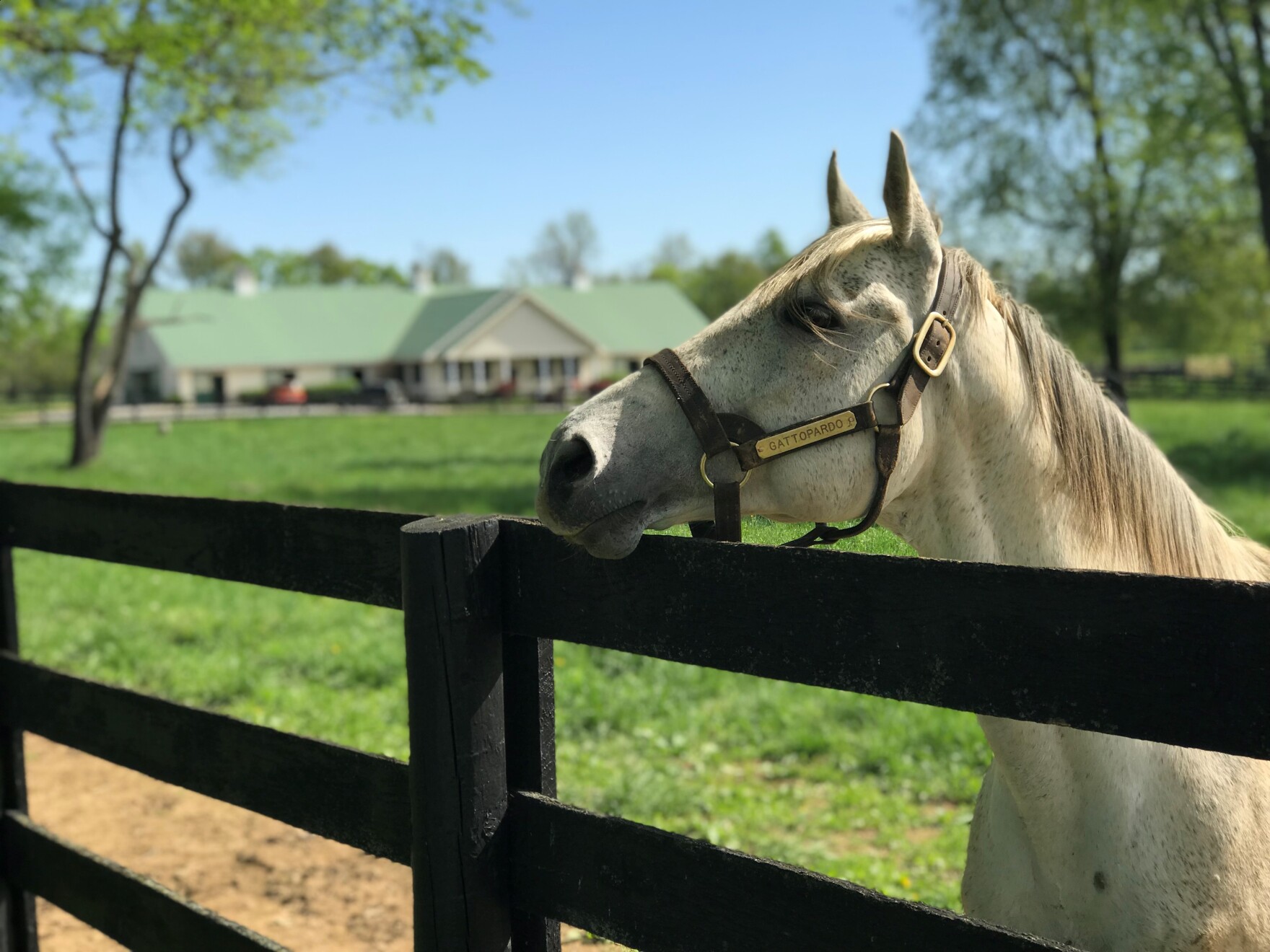After almost 15 years doing without, revenue dollars are flowing back into West Virginia’s horse and dog racing industries. The legislature came through on a promise made more than a decade ago, and men and women within the racing industry are excited at the possibility of a boom in business. As part of our occasional series, “Effective from Passage,” we explore the potential effects of Senate Bill 13 (SB 13), which went into effect last week.
One of Jefferson County, West Virginia’s top three lead trainers is Tim Grams. He and his wife Judy run Grams Racing Stable in Charles Town.
They have 50 horses on their farm and 40 horses at the Hollywood Casino at Charles Town Races. A good portion of those horses belong to clients, but most belong to the Grams.
“We work with all of them every day,” Tim Grams said. “We get up probably right around 4:30 in the morning. My wife, she gets to the racetrack before I do and checks out everything. My wife gets the whole operation started in the morning before I get there.”
Grams and his wife have been doing this work since 1989, and they employ about 14 people in their training operation. This year, Grams’ horse named Runnin’toluvya won a major race called the Charles Town Classic. Grams’ horse was the first West Virginia horse to win the title since its inception in 2009.
The Charles Town Classic is what’s called a Grade II race, which falls just behind a Grade I race, like the Kentucky Derby. The Charles Town Classic was awarded Grade II status in 2012.
Trainers like Grams, as well as breeders, owners, groomers, jockeys, veterinarians, and several more could feel the effects of SB 13.
The bill returns $11 million annually to the state’s four racetracks.
Charles Town Races in Jefferson County and Mountaineer Park in Hancock County race thoroughbreds, while Mardi Gras in Kanawha County and Wheeling Island in Ohio County race greyhounds.
That $11 million will be divided and given to each track throughout the next year on a monthly basis, and it will continue every year after unless the West Virginia Legislature decides otherwise.
The funds can be used to support more race days or employ new people or potentially provide raises. It could help support more breeders, and it can affect the winnings on a horse or dog. Grams believes it could also provide incentive for more people in the industry to do business in West Virginia.
“I really think that that’s going to bring owners back into this business,” Grams explained. “There’ll be more opportunities to race with extra days, and already with the legislation passing, you can already see that the tempo [has] changed around here, and people seem a little bit more relaxed, because they’re not worrying about stuff every day.”
“More than anything, it was the legislature honoring a commitment,” Senate Finance Chairman Craig Blair, R-Berkeley, said. Blair was the lead sponsor of SB 13.
More than a decade ago, in 2005, West Virginia faced a large deficit – the state’s Workers Compensation Debt Reduction Fund was $4 billion in the hole. Blair said, at the time, the state Legislature was looking for ways they could fill that hole, and they looked to areas like the racing industry.
“They were just a pot of money sitting out there that could be reached into to help fund that $4 billion unfunded liability,” Blair explained.
The legislature pulled from other industries, too, such as coal, but lawmakers promised that once the debt was paid off, they would no longer tap into those revenue streams.
And that’s eventually what happened. The racing industry is the last one to see dollars returned.
Grams said the lost dollars over that 14-year period affected his business and many others, because fewer people were coming to West Virginia to breed, train, or race.
“Probably the first couple years, it wasn’t that big of a change. But after that, they look over and see Maryland’s doing great, Pennsylvania’s doing great, and the next thing, they take their mares from your farm. So, with all the other business up and starting to thrive, our revenue as a whole, it went down,” Grams said. “So, you know, it was harder to bring people in the state when we didn’t have the money, and we didn’t have anything to offer them.”
And SB 13 faced some pushback within the legislature. A handful of lawmakers tried to reroute the $11 million to support education.
But Blair argued the revenue wasn’t the legislature’s to bargain with anymore since the workers comp debt had been paid off.
“My number one reason was to keep the legislature’s promise,” Blair explained. “But the number two is, [the racing industry] is an economic engine that drives both tourism and the entertainment industry…but then agriculture as well.”
The most recent economic impact study done on West Virginia’s racing industry was conducted by West Virginia University’s Bureau of Business and Economic Research in 2014.
It found that the thoroughbred and greyhound racing industries in West Virginia contribute more than $320 million annually to the state’s economy and supports 7,300 jobs.
